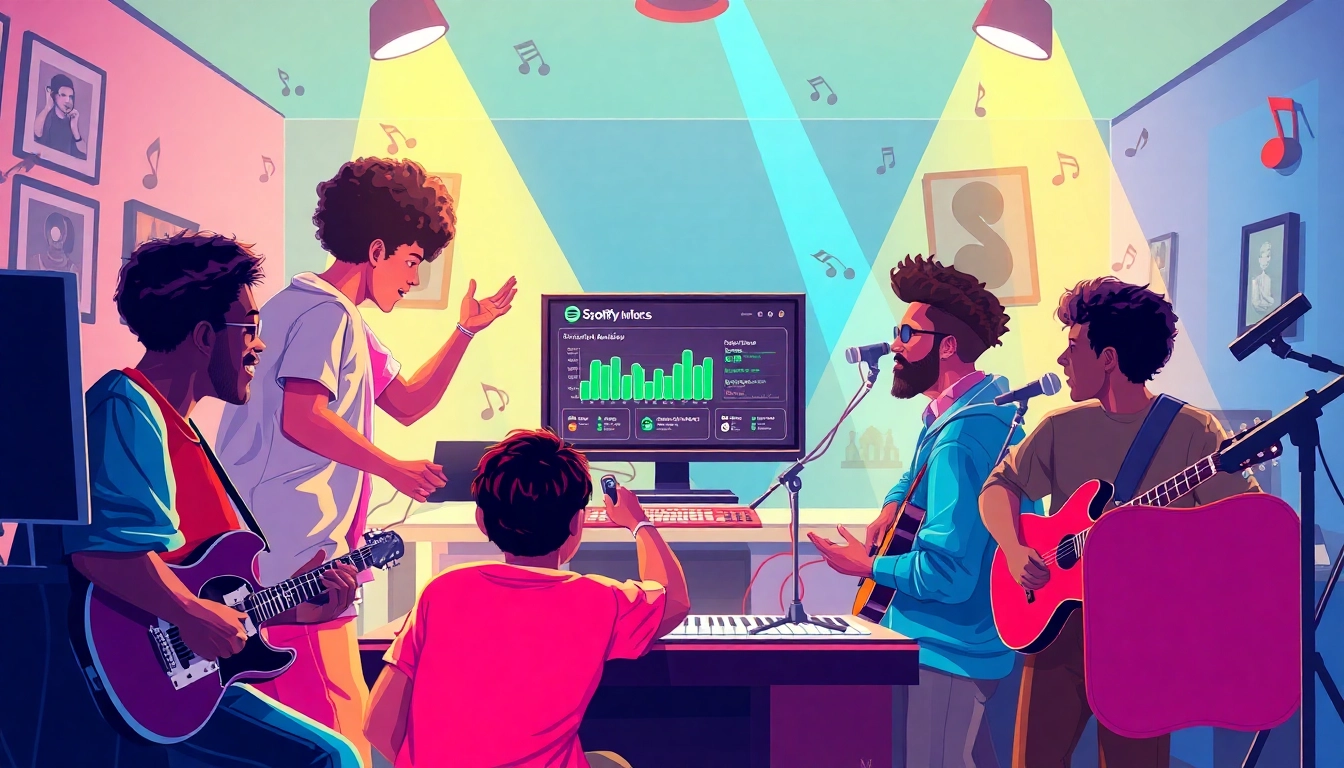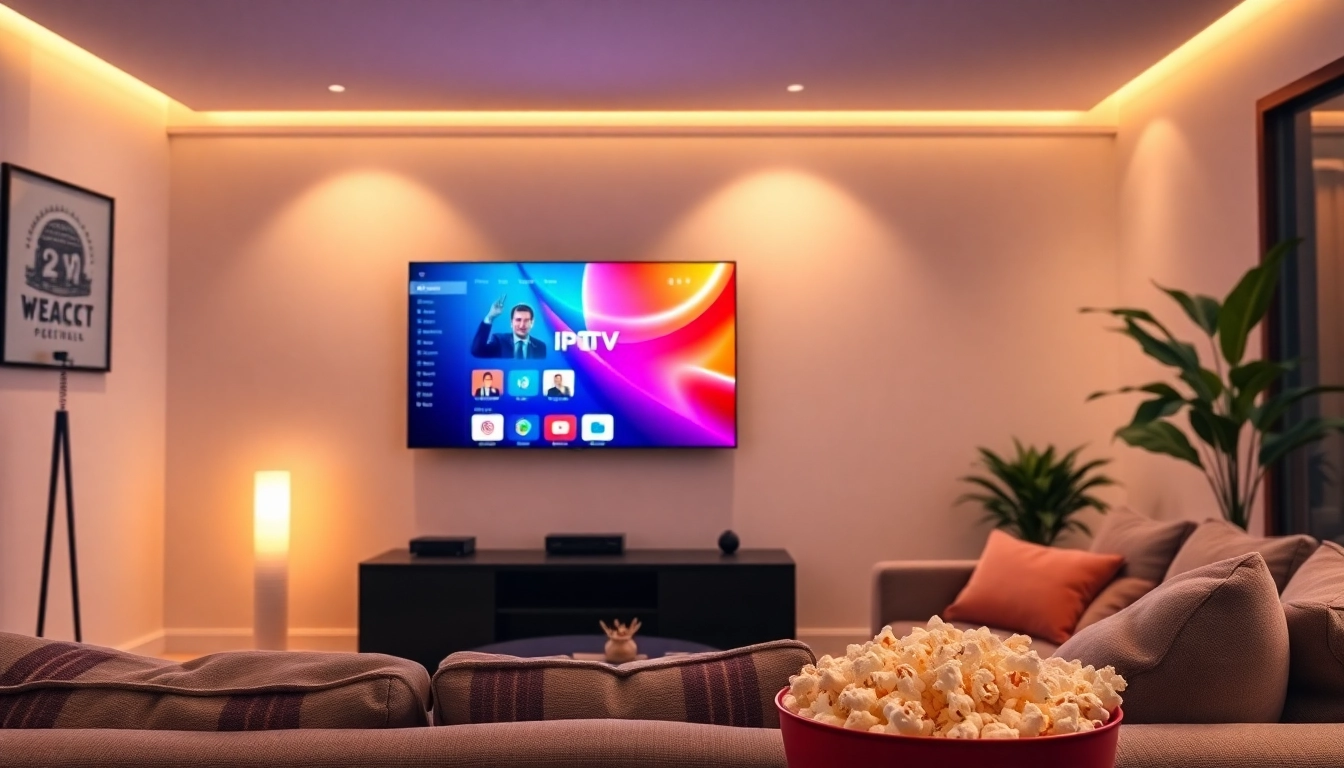Understanding Spotify Promotion and Its Importance
In today’s digital age, the music industry has experienced a dramatic transformation, primarily driven by streaming platforms like Spotify. As an artist, building a compelling presence on Spotify is not just advantageous; it’s essential for success in the competitive music landscape. This comprehensive guide explores the intricacies of spotify promotion, detailing strategies to amplify your reach and increase your listener base.
What is Spotify Promotion?
Spotify promotion refers to the various strategies and methods employed by artists and record labels to enhance their music’s visibility on the Spotify platform. This includes getting music added to playlists, engaging in social media marketing, running ads, and converting listeners into loyal fans. Ultimately, the goal of Spotify promotion is to gain more streams, followers, and engagement, which collectively boost an artist’s profile in an ever-evolving music market.
The Significance of Spotify for Artists
Spotify has grown to be one of the leading music streaming platforms globally, boasting a user base of over 500 million active users. For artists, this platform is a goldmine for exposure and revenue generation. Spotify not only allows musicians to share their work with a broader audience but also provides essential metrics and insights related to listener demographics and behaviors. Understanding these insights can empower artists to refine their strategies for targeted promotion, ultimately leading to better listener engagement and loyalty.
How Spotify Promotion Works
Spotify promotion works through a combination of organic and paid strategies. Organic promotion involves naturally increasing visibility by curating quality content, engaging with fans, and optimizing profiles. In contrast, paid promotion often employs services and tools that help artists reach wider audiences through ads on social media or sponsored playlist placements. The effectiveness of these strategies often hinges on how well artists can combine multiple approaches to cultivate their desired audience and sustain engagement over time.
Best Practices for Effective Spotify Promotion
Creating High-Quality Music to Attract Listeners
The foundation of any successful promotion strategy is ultimately centered around the music itself. High-quality recordings, engaging songwriting, and professional production values can captivate listeners’ attention and encourage them to share your music. Investing time in crafting your sound and considering listener appeal can set the stage for effective promotion.
Optimizing Your Spotify Profile
Your Spotify profile is your sonic storefront, and optimizing it is crucial to making a lasting impression. This includes having a professional artist bio, high-resolution images, and links to your other social media and music platforms. Engaging album artwork can also make a significant difference. Furthermore, regularly updating your profile with new releases, engaging with fans through Spotify Stories, and utilizing the canvas feature can enhance listener experience and retention.
Engaging with Fans through Social Media
Social media platforms serve as powerful tools for artists to engage with their fanbase. Sharing behind-the-scenes content, promotional material, and snippets of upcoming releases can stir excitement and anticipation among listeners. Additionally, responding directly to fans through comments or messages establishes a connection that can foster loyalty. Consistent communication, transparency, and authenticity play vital roles in building a solid fan engagement strategy.
Strategies to Get Featured on Spotify Playlists
The Role of Playlist Curators
Playlist curators act as gatekeepers to a significant avenue of exposure within the Spotify ecosystem. They often select tracks for both editorial and user-generated playlists, making it crucial for artists to understand the selection process. Familiarizing yourself with various playlists that align with your genre can guide your strategies for submitting music. Identifying curators who share a similar ethos or audience can also provide a way to pitch your music more effectively.
How to Pitch Your Music for Playlists
To successfully pitch your music, first craft a compelling message that highlights your music’s uniqueness and relevance to the playlist’s theme. Provide a brief introduction, include links to your best tracks, and explain why your song would resonate with the listeners of that playlist. It’s beneficial to build relationships with curators over time, providing feedback, sharing their playlists, and showing genuine interest in their work, which can pave the way for successful music placements.
Leveraging User-Generated Playlists
User-generated playlists can be just as impactful as curated playlists. Engaging with listeners who create their playlists and sharing your music in exchange for exposure can amplify your reach. Encourage your fans to add your songs to their personal playlists, as these organic shares can lead to greater visibility, attract new listeners, and enhance engagement, ultimately helping to strengthen your position within Spotify’s algorithm.
Utilizing Paid Advertising for Spotify Promotion
Understanding Spotify Ads
Spotify offers advertising opportunities that enable artists to reach specific audiences through targeted campaigns. These ads can appear as audio spots, display banners, or video ads, depending on the artist’s chosen strategy. Understanding the pricing structure, targeting options, and ad formats is crucial to optimizing the advertising budget effectively. Artists should leverage analytical tools to monitor ad performance and audience engagement, adjusting their strategies based on real-time feedback.
Setting a Budget for Promotion
Setting a budget for promotion can be daunting, but it’s essential for ensuring sustainable growth. Allocating funds transparently between various strategies—like social media advertising, playlist placements, and influencer partnerships—can form a comprehensive promotional approach. Artists should keep track of expenditure against results to assess the return on investment and free up funds for high-performing strategies over time.
Measuring the Success of Ad Campaigns
To determine the effectiveness of ad campaigns, artists should monitor key performance indicators (KPIs) such as stream counts, follower growth, engagement rates, and song saves. Tools integrated within Spotify, such as Spotify for Artists, provide valuable insights that can inform future decisions and strategies. Analyzing these metrics allows artists to pivot their campaigns seamlessly to improve outcomes continually.
Analyzing the Results of Your Spotify Promotion Efforts
Metrics to Monitor for Growth
Monitoring growth metrics is imperative for understanding how your music is performing on Spotify. Key metrics include total monthly listeners, playlist adds, saves, skips, and follower counts. These indicators reveal how well your promotional efforts resonate with your audience and help identify trends over time. Establishing a routine for reviewing these metrics will allow you to adjust strategies promptly based on performance.
Using Analytics Tools to Improve Strategies
Leveraging analytics tools offers advanced insights into listener behavior. For instance, Spotify for Artists provides data on where your audience is located, how they found your music, and even their demographic breakdown. Utilizing this information can assist in pinpointing which marketing messages resonate most effectively with specific demographics, enabling the creation of targeted, bespoke promotional content.
Adapting Your Promotion Tactics Based on Feedback
Creative marketing is often iterative, meaning that responding to feedback—both qualitative and quantitative—is essential for optimizing your promotion strategies. Pay attention to listener comments and industry feedback, and be willing to make changes based on what works and what doesn’t. Building a feedback loop helps not only in honing artistic endeavors but also ensures that promotional strategies remain aligned with listener preferences over time.



